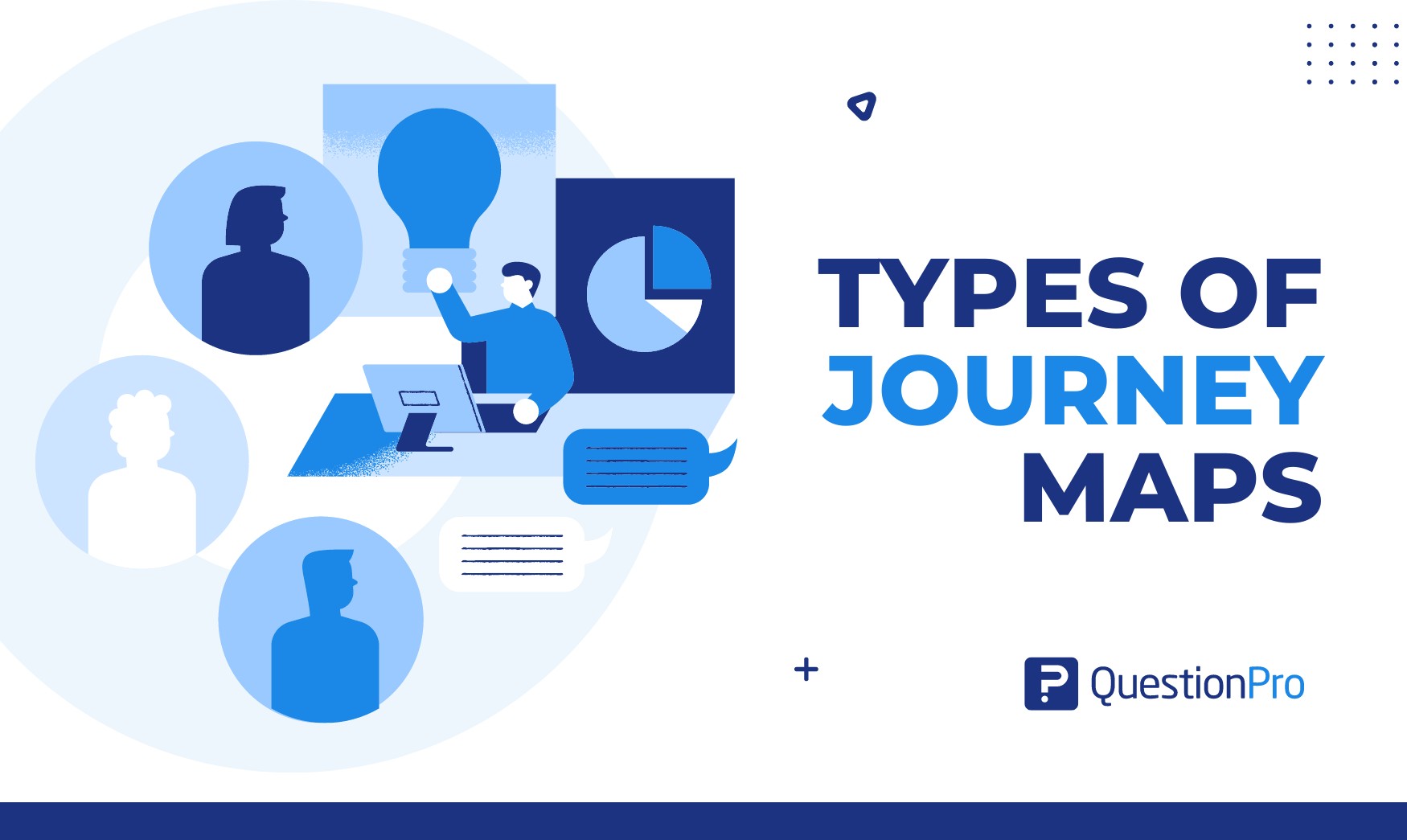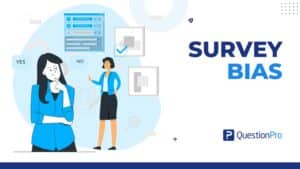
Understanding the complexities of customer experience helps businesses differentiate themselves. Different types of journey maps are invaluable in this pursuit, offering a structured visualization of customer interactions and emotions. Join us in exploring this topic.
By delineating different types of journey maps, organizations can navigate and improve their understanding of their own customer journey—from initial engagement to post-purchase support.
This blog explores the diverse journey maps that companies use to guide their customers. Each type can empower businesses to align strategies with customer expectations, ultimately boosting loyalty and sustained growth.
What are Journey Maps?
Journey maps are visual examples that describe the steps a customer takes when interacting with a product, service, or brand. They help organizations understand and empathize with their customers, providing insights into their emotions, motivations, and challenges at each journey stage.
Analyzing customer surveys provides valuable insights into the user’s journey, guiding effective user research strategies for optimizing product experiences. Typically, a journey map includes:
- Stages or Phases: The distinct parts of the customer’s interaction process, such as awareness, consideration, purchase, and post-purchase.
- Touchpoints: Specific interactions between the customer and the brand, like visiting a website, speaking to customer service, or purchasing.
- Emotions and Thoughts: The customer experiences feelings and thoughts at each stage.
- Pain Points: Challenges or frustrations the customer encounters.
- Opportunities: Areas where the brand can improve the customer experience.
Journey Map vs. Experience Map
Journey maps and experience maps are essential tools in user experience (UX) and customer experience (CX) design. Despite their often-confused usage, each serves distinct purposes. Let’s find out the differences between them:
| Feature | Journey Map | Experience Map |
| Focus | Specific user persona and scenario | Broad and holistic user/customer experience |
| Scope | Detailed, scenario-specific interactions | Comprehensive, cross-channel interactions |
| Chronology | Chronological order of interactions | Non-chronological, high-level overview |
| Detail Level | Detailed and granular | High-level and abstract |
| Primary Use | Improving specific processes or scenarios | Understanding the overall experience of landscape |
Journey Map:
Journey maps are detailed visualizations that outline a particular user’s interactions with a product, service, or organization through a specific scenario or process. They focus on providing a chronological sequence of the user’s actions, emotions, pain points, and touchpoints. This tool is ideal for understanding and optimizing specific user experiences by pinpointing areas for improvement within a defined context.
Experience Map:
Experience maps offer a broader perspective, capturing a user or customer’s interactions across multiple touchpoints and channels. They emphasize the journey and relationship between different interactions rather than a specific sequence.
Experience maps are useful for gaining insights into the holistic user experience, identifying common themes, and aligning cross-functional teams around a unified understanding of the customer journey.
Choosing the Right Tool:
Deciding between a journey map and an experience map depends on the project’s objectives. Use some of the types of journey maps when detailed insights into specific user scenarios or processes, such as onboarding or purchasing.
Opt for an experience map when a comprehensive understanding of the customer journey across various channels is required. Both tools are crucial in UX and CX design, enabling organizations to enhance customer satisfaction, streamline processes, and deliver more user-centric products and services.
Types of Journey Maps
In the customer journey mapping process, different types of journey maps, such as current state, future state, and day-in-the-life, help visualize and understand customers’ varied experiences interacting with a product or service.
Journey maps come in various forms, each suited to different contexts and objectives. Here are the main types:
1. Current State Journey Map
A Current State Journey Map captures and visualizes how users are currently experiencing a product or service. It highlights existing processes, touchpoints, and pain points, providing insights into what’s working well and what needs improvement.
When to Use:
- To understand the existing user experience.
- To identify areas where users face challenges or obstacles.
- As a baseline for future improvements or redesigns.
Example: Mapping a customer’s process when booking a flight online, from searching for flights to receiving a booking confirmation.
2. Future State Journey Map
A Future State Journey Map envisions an ideal user experience in the future. It outlines how users interact with a product or service after implementing planned improvements or innovations. This type of map helps teams set goals and create a shared vision for future developments.
When to Use:
- To plan and strategize for future improvements.
- To align teams around a desired future experience.
- To drive innovation and set priorities for development.
Example: Designing a new, streamlined process for booking a flight that reduces steps and enhances user convenience.
3. Day-in-the-Life Journey Map
A Day-in-the-Life Journey Map provides a detailed view of a user’s daily interactions and experiences with a product or service throughout the day. It goes beyond specific touchpoints to understand how a product fits into and impacts the user’s daily routine.
When to Use:
- To understand deeply how a product or service integrates into users’ daily lives.
- To identify opportunities to enhance user engagement throughout the day.
- For products and services that are used regularly or significantly impact daily routines.
Example: Mapping how a busy professional uses a fitness app from morning until night, including interactions at work, during commutes, and leisure time.
4. Service Blueprint
A Service Blueprint extends the journey map concept by incorporating user actions and organizational processes. It maps out the front-stage and back-stage activities that support the user experience, including the systems, people, and processes involved. This comprehensive approach helps identify inefficiencies and improve service delivery.
When to Use:
- To understand and optimize the internal processes that support user experiences.
- To ensure alignment between customer-facing activities and backend operations.
- For services that involve complex interactions between users and the organization.
Example: Blueprinting the entire customer support process for an online service, from initial contact to resolution, including the roles of customer service representatives and support systems.
5. Persona-Based Journey Map
A Persona-Based Journey Map focuses on a specific user persona and maps their unique journey with a product or service. It helps teams understand different user segments’ distinct needs, behaviors, and pain points, leading to more personalized and effective solutions.
When to Use:
- To tailor experiences to different user segments or personas.
- To highlight the diverse needs and challenges of various user groups.
- For products and services with a wide range of users.
Example: Mapping the journey of a tech-savvy millennial versus a less tech-savvy senior citizen when using an online banking app.
How to Choose the Right Type of Journey Map for Your Project
Selecting the appropriate type of journey map depends on your project’s objectives, the level of detail required, and the stage of the customer journey you want to analyze or improve. Here are some guiding questions to help you choose:
- What is the goal of your mapping exercise?
- To understand the current experience, Use Current State Journey Maps.
- To design a future experience: Opt for Future State Journey Maps.
- To integrate internal processes with customer journeys, Choose Service Blueprint Journey Maps.
- Go with Day in the Life Journey Maps to explore the customer’s daily context.
- Persona-Based Journey Maps are ideal for catering to specific customer groups.
- What level of detail is needed?
- For granular insights into specific scenarios: Journey Maps.
- For a comprehensive view across multiple touchpoints: Experience Maps.
- Who are the stakeholders?
- Align your choice with the needs of stakeholders, whether they are customer service teams, product managers, or executive leaders, to ensure the map provides the necessary insights for decision-making.
- What stage of the customer journey are you focusing on?
- Different stages may require different maps. For example, a Persona-Based Customer Journey Map might benefit the awareness stage, while a Service Blueprint could better serve the post-purchase phase.
How QuestionPro CX Can Define Various Types of Journey Maps
QuestionPro CX is a versatile platform that allows you to create various journey maps to understand and improve customer experiences. Here are some ways it can help define different types of journey maps:
1. Customer Journey Maps
These maps visualize the end-to-end customer experience across various touchpoints. QuestionPro CX enables you to capture customer interactions, emotions, pain points, and improvement opportunities throughout the journey.
2. Service Blueprint Maps
This map goes beyond the customer journey to include the backend processes and systems supporting service delivery. QuestionPro CX can integrate feedback and data from customer-facing interactions and internal processes to create comprehensive service blueprints.
3. User Experience (UX) Maps
For digital products and services, UX maps focus on users’ interactions with interfaces and platforms. QuestionPro CX allows you to gather user feedback and behavior data to map out the user experience journey, highlighting usability issues and areas for enhancement.
4. Persona-Based Maps
These maps illustrate the journey of specific customer personas or segments. QuestionPro CX lets you segment feedback and insights by different customer personas, enabling you to tailor journey maps to each group’s unique needs and behaviors.
5. Emotion Maps
Understanding customers’ emotional journeys is crucial for improving satisfaction and loyalty. QuestionPro CX can capture and analyze emotional responses at different journey stages, helping you design experiences that resonate emotionally with customers.
6. Cross-Channel Journey Maps
Customers interact with brands through multiple channels in today’s omnichannel environment. QuestionPro CX can aggregate data from various touchpoints (such as web, mobile, social media, and customer service) to create cross-channel journey maps that reflect customers’ seamless (or fragmented) experience across different platforms.
7. Customer Lifecycle Maps
These maps track customers’ journeys from initial awareness through post-purchase support and loyalty. QuestionPro CX allows you to monitor and analyze customer interactions at each lifecycle stage, identifying opportunities to optimize experiences and foster long-term relationships.
Conclusion
Journey maps are invaluable tools for understanding and enhancing the customer experience. By choosing the right type of journey map for your project, you can gain critical insights into customer behavior, identify areas for improvement, and ultimately create a more satisfying and seamless customer experience.
Whether you’re exploring current experiences, envisioning future ones, or connecting internal processes to customer interactions, there is a user journey map to suit your needs. Embrace these tools to navigate and elevate your customer’s journey effectively.
By utilizing these capabilities, QuestionPro CX enables businesses to create comprehensive and actionable journey maps that visualize the customer experience and drive improvements in customer satisfaction, retention, and loyalty.
Each type of journey map can be customized to focus on different aspects of the customer journey, ensuring a nuanced understanding of customer interactions and behaviors. So, try out the free trial now to know more.







